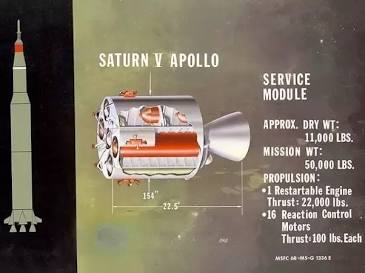The Saturn V rocket, used for the Apollo 11 moon mission, carried nearly 950,000 gallons of fuel. The first stage alone held over 500,000 gallons for escaping Earth's atmosphere. The second and third stages carried additional fuel: 260,000 gallons of liquid hydrogen and 80,000 gallons of liquid oxygen in the second stage, and 66,700 gallons of liquid hydrogen and 19,359 gallons of liquid oxygen in the third stage.
https://www.tiktok.com/@exposingthetruth65/video/7490643953390341407?is_from_webapp=1&sender_device=pc
The Space Shuttle is moving at approximately 3,094 miles per hour (4,979 km/h) at the time of solid rocket booster (SRB) separation. This occurs roughly 2 minutes after launch, at an altitude of around 45 km (28 miles, 146,000 feet).
Notice how the cute little hook beneath the cockpit attaches to the main booster and keeps the shuttle from being ripped off from traveling at 3,100mph or 4 times the speed of sound. Lol. Plus, we never hear the sonic boom in the 60s-2020s of any rocket!! Lol
Jet creating sonic boom by breaking sound barrier at 767mph.
The shuttle is traveling 4 times faster than goes up to 17,000mph. LOLOLOLOL Shuttle allegedly surpasses the SR-71!! Lol
https://www.tiktok.com/t/ZP8Aj6am4/
The Saturn Rocket needed 15.83 of these gigantic tanks to get to the moon and back. Lol. NASA CONNED the world.
https://www.tiktok.com/t/ZP8A1owcb/
YES, AIRPLANE FUEL TECHNOLOGY IS A HOAX TO STEAL BIG MONEY FROM THE MASSES!!!
To reach the Moon, a rocket would require a substantial amount of fuel, typically in the millions of gallons for the entire journey, including liftoff, travel to lunar orbit, and potentially landing and returning. The Apollo 11 mission, for exampleu is, used around 950,000 gallons of fuel to get to the Moon. The fuel requirements are significantly higher for the initial ascent and orbit insertion phases compared to the lunar orbit or descent.
Here's a more detailed breakdown:
- The Saturn V rocket, used for the Apollo missions, burned through 735,000 gallons of liquid propellant in eight minutes just to lift the spacecraft 38 miles into the sky, according to NASA.
- Popular Mechanics says the Saturn V burned 203,400 gallons of kerosene and 318,000 gallons of liquid oxygen just to reach low Earth orbit.
- SpaceX's Starship, according to Futurism, would require eight Starship launches to fill up the tanks of a single lunar Starship, potentially holding 1200 tons of fuel.
- The Saturn V, for example, launched with a total mass of 3,000 tons and sent approximately 50 tons to the Moon, according to a Reddit thread. This demonstrates the significant fuel needed to overcome Earth's gravity and reach the Moon.
Generative AI is experimental.
























No comments:
Post a Comment